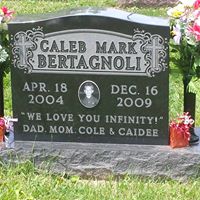Paul William Rutkowski
age ~69
from Ocala, FL
- Also known as:
-
- Paul W Rutkowski
- Paul M Rutkowski
- Paul Rutkowski Pod
- Helen K Rutkowski
- Parul W Rutkowski
- Phone and address:
- 9718 SW 92Nd St, Ocala, FL 34481
Paul Rutkowski Phones & Addresses
- 9718 SW 92Nd St, Ocala, FL 34481
- 26 Stella Dr, Bridgewater, NJ 08807 • (908)7251140 • (908)7251974
- Linden, NJ
- Morris Plains, NJ
- Randolph, NJ
- 26 Stella Dr, Bridgewater, NJ 08807 • (908)6017733
Work
-
Position:Food Preparation and Serving Related Occupations
Education
-
Degree:High school graduate or higher
License Records
Paul J Rutkowski
License #:
E118501 - Active
Category:
Emergency medical services
Issued Date:
Dec 15, 2015
Expiration Date:
Dec 31, 2017
Type:
San Diego County EMS Agency
Medicine Doctors

Paul M. Rutkowski
view sourceSpecialties:
Internal Medicine
Work:
Advanced Inpatient Medicine
575 N Riv St, Wilkes Barre, PA 18764
(570)5524450 (phone), (570)5524455 (fax)
575 N Riv St, Wilkes Barre, PA 18764
(570)5524450 (phone), (570)5524455 (fax)
Education:
Medical School
Philadelphia College of Osteopathic Medicine
Graduated: 2006
Philadelphia College of Osteopathic Medicine
Graduated: 2006
Procedures:
Vaccine Administration
Electrocardiogram (EKG or ECG)
Electrocardiogram (EKG or ECG)
Conditions:
Acute Myocardial Infarction (AMI)
Acute Pancreatitis
Acute Renal Failure
Alcohol Dependence
Anemia
Acute Pancreatitis
Acute Renal Failure
Alcohol Dependence
Anemia
Languages:
English
Description:
Dr. Rutkowski graduated from the Philadelphia College of Osteopathic Medicine in 2006. He works in Wilkes-Barre, PA and specializes in Internal Medicine. Dr. Rutkowski is affiliated with Wilkes Barre General Hospital.

Paul C. Rutkowski
view sourceSpecialties:
Ophthalmology
Work:
Paul C Rutkowski MD
282 Harrison Ave, Harrison, NY 10528
(914)8351031 (phone), (914)8353601 (fax)
282 Harrison Ave, Harrison, NY 10528
(914)8351031 (phone), (914)8353601 (fax)
Education:
Medical School
University of Vermont COM
Graduated: 1963
University of Vermont COM
Graduated: 1963
Procedures:
Lens and Cataract Procedures
Ophthalmological Exam
Ophthalmological Exam
Conditions:
Acute Conjunctivitis
Cataract
Keratitis
Macular Degeneration
Diabetic Retinopathy
Cataract
Keratitis
Macular Degeneration
Diabetic Retinopathy
Languages:
English
French
German
Spanish
French
German
Spanish
Description:
Dr. Rutkowski graduated from the University of Vermont COM in 1963. He works in Harrison, NY and specializes in Ophthalmology.

Paul Chester Rutkowski
view sourceSpecialties:
Ophthalmology
Education:
University of Vermont (1963)
Us Patents
-
Built-In Self-Test Hierarchy For An Integrated Circuit
view source -
US Patent:7005873, Feb 28, 2006
-
Filed:Dec 31, 2002
-
Appl. No.:10/335540
-
Inventors:Laurence Reeves - Crowthorne, GB
Paul W. Rutkowski - Bridgewater NJ, US
Jing Wu - North Brunswick NJ, US -
Assignee:Agere Systems Inc. - Allentown PA
-
International Classification:G01R 31/26
-
US Classification:324765, 324763, 714733
-
Abstract:A built-in, self-test (BIST) network employs a hierarchy of Universal BIST schedulers (UBSs) for scheduling and coordinating testing of elements, such as regular structure BISTed (RSB) elements and random logic BISTed (RLB) elements. Individual UBSs are preferably positioned in local areas, or sections, of an integrated circuit for testing of RSB and RLB elements within the local area. Testing of RSB and RLB elements within the local area allows the BIST network to minimize effects of delay and clock skew by employing relatively short interconnect routing between BISTed elements. Each of the individual UBSs are, in turn, controlled by a master UBS (MUBS) via simplified timing of control signals. The MUBS also may interface with an external testing device that initiates BISTed testing.
-
Enhanced Boundary-Scan Method And Apparatus Providing Tester Channel Reduction
view source -
US Patent:20040199838, Oct 7, 2004
-
Filed:Mar 19, 2003
-
Appl. No.:10/392011
-
Inventors:Paul Rutkowski - Bridgewater NJ, US
Larry Wall - Fogelsville PA, US -
International Classification:H03K019/00
G01R031/28 -
US Classification:714/724000
-
Abstract:An integrated circuit or other electronic circuitry is tested by arranging device pins into multiple-pin groups, and permitting the device pins of the group to share a single tester channel of a piece of test equipment. More particularly, a group comprising a plurality of device pins of the electronic circuitry is designated, and assigned to one of a plurality of tester channels in the test equipment. A test may then be performed on the electronic circuitry, via the assigned tester channel, utilizing at least a subset of the device pins in the designated multiple-pin group. Advantageously, the invention allows high pin count integrated circuits to be tested using inexpensive test equipment platforms.
-
Pseudo-Exhaustive Self-Test Technique
view source -
US Patent:51877120, Feb 16, 1993
-
Filed:Feb 26, 1990
-
Appl. No.:7/484336
-
Inventors:John A. Malleo-Roach - Lambertville NJ
Paul W. Rutkowski - Morris Plains NJ
Eleanor Wu - Princeton NJ -
Assignee:AT&T Bell Laboratories - Murray Hill NJ
-
International Classification:G01R 3128
-
US Classification:371 221
-
Abstract:Psuedo-exhaustive self-testing of an electronic circuit (10), containing groups of combinational elements (14. sub. 1, 14. sub. 2, 14. sub. 3. . . 14. sub. n), is accomplished by first partitioning the groups of combinational elements into sub-cones having no more than w imputs each by designating appropriate nodes ("test points") in each cone as the output of a sub-cone. A set of test vectors {a. sub. 1, a. sub. 2. . . a. sub. w, b. sub. 1, b. sub. 2. . . b. sub. w } is then generated (via an internal generator 74) such that when the vectors are applied to the sub-cones (14. sub. 1. sbsb. a, 14. sub. 1. sbsb. b. . . . 14. sub. i. sbsb. j), each sub-cone will be exhaustively tested. Each of the inputs of the sub-cones is assigned to receive a vector such that the vectors received at the inputs are linearly independent. The subset of vectors is applied through each of a plurality of pseudo-exhaustive self-test (PEST) flip-flop circuits (88) and through the test points to test the circuit.
-
Built-In Self-Test In A Plurality Of Stages Controlled By A Token Passing Network And Method
view source -
US Patent:59789476, Nov 2, 1999
-
Filed:Oct 7, 1997
-
Appl. No.:8/944617
-
Inventors:Ilyoung Kim - Plainsboro NJ
Paul William Rutkowski - Bridgewater NJ
Yervant Zorian - Santa Clara County CA -
Assignee:Lucent Technologies Inc. - Murray Hill NJ
-
International Classification:G01R 3128
-
US Classification:714733
-
Abstract:This invention relates to a token passing network, called a Universal BIST Scheduler (UBS), and a method for scheduling BISTed memory elements based on: executing BIST in multiple stages in order to optimize the efficiency of continuous processing and to apply a single waiting period to multiple SBRIC. sub. -- RSs where, for example, BIST includes retention testing; dividing resource controllers or SBRIC. sub. -- RSs corresponding to one or more RSB elements into a matrix such that each SBRIC. sub. -- RS executes the BIST of its memory elements concurrently and/or successively depending on the SBRIC. sub. -- RS's position in the matrix; and passing a token to initiate processing of a set of SBRIC. sub. -- RSs in the matrix through a level signal rather than a pulse signal in order to ensure that the signal is not lost.
-
Boundary Scan Cell
view source -
US Patent:54901510, Feb 6, 1996
-
Filed:Jul 26, 1993
-
Appl. No.:8/096286
-
Inventors:William E. Feger - Macungie PA
Paul W. Rutkowski - Morris Plains NJ -
Assignee:AT&T Corp. - Murray Hill NJ
-
International Classification:G01R 3128
-
US Classification:371 223
-
Abstract:A Boundary-Scan cell (12') for facilitating testing of an electronic device (10), includes a system flip-flop (30') interposed between an output buffer (18) of the device and an internal logic block (14) which drives the buffer. The system flip-flop has asynchronous clear and preset capability which allows the flip-flop to be cleared or preset as necessary so that its output bit reflects a bit previously latched in the Boundary-Scan cell during testing. During non-testing intervals, the preset and clear capability of the system flip-flop (30') is disabled to allow the flip-flop to pass a bit between the internal logic of the device and the output buffer without undue propagation delays.
-
Built-In Self-Test Controlled By A Token Network And Method
view source -
US Patent:62371231, May 22, 2001
-
Filed:Oct 7, 1997
-
Appl. No.:8/944618
-
Inventors:Ilyoung Kim - Plainsboro NJ
Paul William Rutkowski - Bridgewater NJ
Yervant Zorian - Santa Clara County CA -
Assignee:Lucent Technologies Inc. - Murray Hill NJ
-
International Classification:G06F 1100
-
US Classification:714733
-
Abstract:This invention relates to a token passing network, called a Universal BIST Scheduler (UBS), and a method for scheduling BISTed memory elements based on: executing BIST in multiple stages in order to optimize the efficiency of continuous processing and to apply a single waiting period to multiple SBRIC_RSs where, for example, BIST includes retention testing; dividing resource controllers or SBRIC_RSs corresponding to one or more RSB elements into a matrix such that each SBRIC_RS executes the BIST of its memory elements concurrently and/or successively depending on the SBRIC_RS's position in the matrix; and passing a token to initiate processing of a set of SBRIC_RSs in the matrix through a level signal rather than a pulse signal in order to ensure that the signal is not lost.
-
Method And Apparatus For Partial-Scan Testing Of A Device Using Its Boundary-Scan Port
view source -
US Patent:56235038, Apr 22, 1997
-
Filed:Jul 2, 1996
-
Appl. No.:8/668502
-
Inventors:Paul W. Rutkowski - Bridgewater NJ
-
Assignee:Lucent Technologies Inc. - Murray Hill NJ
-
International Classification:G01R 3128
-
US Classification:371 223
-
Abstract:Partial-Scan testing of an integrated circuit (10) having a Boundary-Scan architecture (18) is accomplished by way of a Partial-Scan controller (36) contained within the integrated circuit. In response to control signals generated by Boundary-Scan architecture (18), the Partial-Scan controller (36) generates a set of Partial-Scan control signals for causing the integrated circuit to accomplish Partial-Scan testing. In this way, the Partial-Scan control signals necessary to accomplish Partial-Scan testing are generated internally, rather than requiring a separate set of input pins to receive the Partial-Scan control signals from an external source.
-
Pseudo-Exhaustive Self-Test Technique
view source -
US Patent:54576970, Oct 10, 1995
-
Filed:Aug 26, 1992
-
Appl. No.:7/935322
-
Inventors:John A. Malleo-Roach - Lambertville NJ
Paul W. Rutkowski - Morris Plains NJ
Eleanor Wu - Princeton NJ -
Assignee:AT&T IPM Corp. - Coral Gables FL
-
International Classification:G01R 313183
G01R 313185 -
US Classification:371 223
-
Abstract:Pseudo-exhaustive self-testing of an electronic circuit (10), containing groups of combinational elements (14. sub. 1,14. sub. 2, 14. sub. 3. . . 14. sub. n), is accomplished by first partitioning the groups of combinational elements into sub-cones having no more than w inputs each by designating appropriate nodes ("test points") in each cone as the output of a sub-cone. A set of test vectors {a. sub. 1, a. sub. 2. . . a. sub. w, b. sub. 1, b. sub. 2. . . b. sub. w } is then generated (via an internal generator 74) such that when the vectors are applied to the sub-cones (14. sub. 1. sbsb. a, 14. sub. 1. sbsb. b. . . . 14. sub. i. sbsb. j), each sub-cone will be exhaustively tested. Each of the inputs of the sub-cones is assigned to receive a vector such that the vectors received at the inputs are linearly independent. The subset of vectors is applied through each of a plurality of pseudo-exhaustive self-test (PEST) flip-flop circuits (88) and through the test points to test the circuit. The PEST flip-flop circuits 88 also serve to advantageously compact and observe the response data produced by each sub-cone (14. sub. i. sbsb.
Resumes

Paul Rutkowski
view source
Paul Rutkowski
view source
Paul Rutkowski
view source
Orthopaedic Surgeon
view sourceWork:
Orthopaedic Surgeon

Paul Rutkowski
view source
Paul Rutkowski
view sourceLocation:
United States
Flickr
Plaxo

Paul Rutkowski
view source25810 Mount Carillon, San Antonio, TXPast: Sr. Director - Transportation Services & Distribution at smurfit stone container, Director...

Paul Rutkowski
view source
Paul Rutkowski
view source
Paul Rutkowski
view source
Paul Rutkowski
view source
Paul Rutkowski
view source
John Paul Rutkowski
view source
Paul A Rutkowski
view source
Paul Rutkowski
view sourceGoogleplus

Paul Rutkowski

Paul Rutkowski

Paul Rutkowski

Paul Rutkowski
Classmates

Paul Rutkowski
view sourceSchools:
Port Austin High School Port Austin MI 1974-1978
Community:
Catherine Dunkin, Scott Arnold, James Ellis, Darrel Heins

Paul Rutkowski
view sourceSchools:
Bishop Hannan High School Scranton PA 1994-1998
Community:
Sharyn Larkin, Donna Brennan

Paul Rutkowski
view sourceSchools:
Giese Elementary School Racine WI 1975-1982, Starbuck Middle School Racine WI 1982-1984
Community:
Janice Hand

Paul Rutkowski
view sourceSchools:
Oak Park High School Oak Park MI 1967-1971
Community:
Michael Sinclair, Joyce Reeves

Paul Rutkowski
view sourceSchools:
St. Viator High School Arlington Heights IL 1986-1990
Community:
Todd Harris, Anthony Russo, Lisa Jarolin, Karie Kordick

Paul Rutkowski
view sourceSchools:
Sweet Home Middle School Amherst NY 2000-2001
Community:
Ryan Jones, Dan Jones, Victoria Boorman, Jamel Gore

Paul Rutkowski
view sourceSchools:
Nolan High School Ft. Worth TX 1985-1989
Community:
Alicia Birong

Paul Rutkowski
view sourceSchools:
Niagara Wheatfield Middle School Niagara Falls NY 1979-1983
Community:
Sandra Scalzo, Catherine Dunkin, Allyn Luce, Thomas Shugerts
Myspace
Youtube
Get Report for Paul William Rutkowski from Ocala, FL, age ~69









